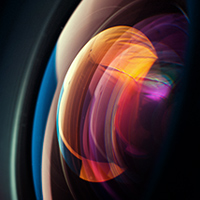Abstract
The conventional way to generate intense broadband pulses in the infrared and far-infrared spectral regimes is nonlinear down-conversion of optical pulses derived from table-top laser systems. Until a few years ago, the different wave-mixing schemes gave access to segments of either the far-infrared (frequencies well below 10 THz) or the infrared (frequencies above 30 THz) regime, but not to both simultaneously. This has changed with the advent of intense sub-20-fs optical pulses which have led to a confluence of pulse generation across the barren region at 7-30 THz. Today, tunable pulses covering substantial parts of the spectrum from the far-to the mid-infrared, or even extending over the full range, are available , employing such techniques as difference-frequency mixing of two (near-)infrared pulses in nonlinear crystals [1], optical rectification in crystals [2] and nonlinear wave-mixing in laser-ionized gas plasmas [3,4]. An example for the latter case is illustrated by Fig. 1, showing an experimental scheme for the generation of ultra -broadband electromagnetic pulses by air-plasma excitation with femtosecond two-colour optical fields [4]. The resultant THz pulses exhibit a bandwidth (10 % from maximum) exceeding 100 THz. Very high field strengths of tens of MV/cm are reached.
© 2013 IEEE
PDF ArticleMore Like This
Claudia Gollner, Mostafa Shalaby, Edgar Kaksis, Ignas Astrauskas, Valentina Shumakova, Corinne Brodeur, Andrius Baltuska, and Audrius Pugzlys
JTu2G.24 CLEO: Applications and Technology (CLEO:A&T) 2020
J. W. Lin, J. W. Shi, C. B. Huang, and C. L. Pan
FTh3B.7 Frontiers in Optics (FiO) 2013
S. Mondal, Q. Wei, H. A. Hafez, M.A. Fareed, S. Sun, and T. Ozaki
M3A.3 International Conference on Fibre Optics and Photonics (Photonics) 2014

